Chuwi Hi13 - almost Surface
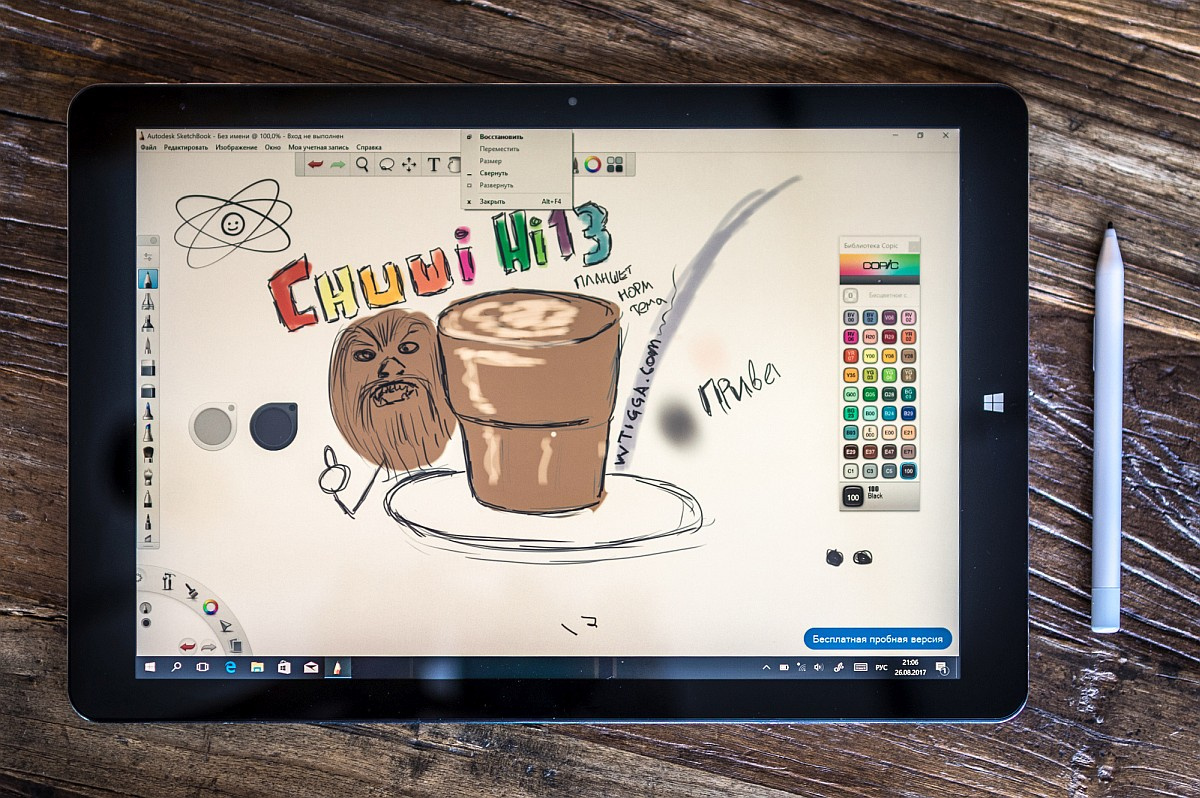
* joke about consonance of the name of the tablet with Chewbacca
We got a tablet-laptop at home, we have long wanted. The choice fell on Chuwi Hi13. It's like the Microsoft Surface Book, only cheap and cheerful, but with a good screen. I'll tell you what's good in him, and why you should look closely.
Disclaimer
There are no affiliate links, look at the manufacturer’s website or store.
Specifications
- Windows 10 64 bit
- Intel Celeron N3450 (Apollo Lake) 1.1 GHz (Boost up to 2.2 GHz)
- Screen 13.5 "3000x2000
- Stylus 1024 HiPen H3 Touch Levels
- 4 GB RAM LPDDR3, 64 GB eMMC
- Intel HD Graphics 500
- Battery 37 Wh, 7.4 Volts (10,000 mAh)
- Wi-Fi 2.4 + 5 GHz 802.11a / ac / b / g / n, Bluetooth 4.1
- USB Type-C, Micro HDMI, microSD, 3.5 mm audio
- Weight 1.1 kg
- Front camera 2 megapixel rear camera 5 megapixel
- Price US $ 380 (with keyboard and stylus)
Included: charging USB Type-C 12 Volt (Russian outlet). The keyboard and stylus are purchased separately, I took.
Appearance

The tablet
On the front side there is a 13.5 "screen, in the center to the right is the Windows button (" Start "), in the center above the screen is a 2-megapixel webcam's peephole.

All connectors are located on the left side: 3.5 mm audio, Micro HDMI, microUSB, USB Type-C and micro SD slot. I like the solution, where all the ports are on the one hand, then the bundle of wires when connecting the periphery will be very compact.
I was surprised by the lack of a full-fledged USB port: instead there is a microUSB to which you can connect an OTG adapter. But USB Type-C works only as a port for charging. In the previous Hi12 model , the two ports were directly on the tablet. Now they migrated to the keyboard.
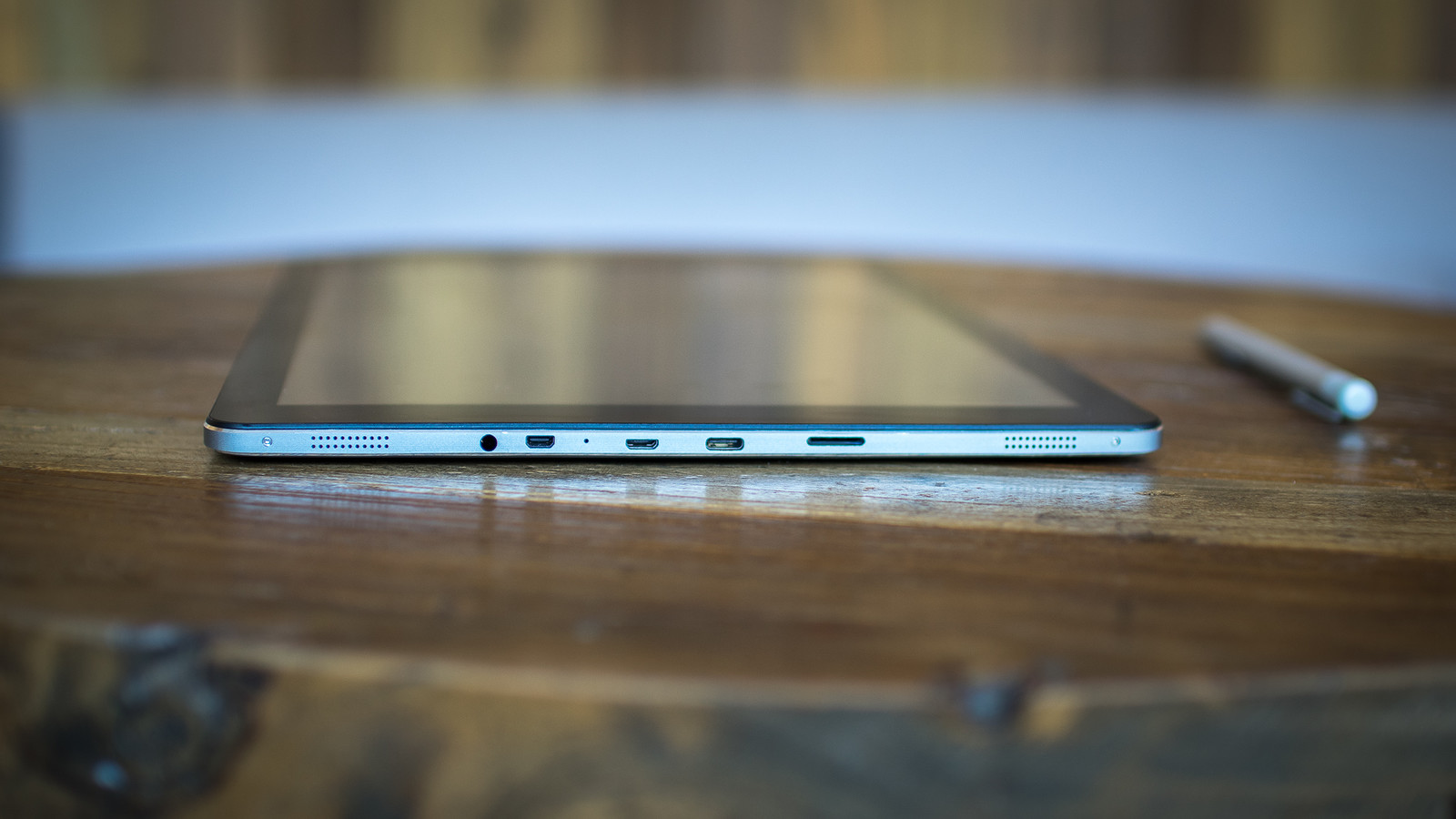
On the top is a volume rocker and power button.
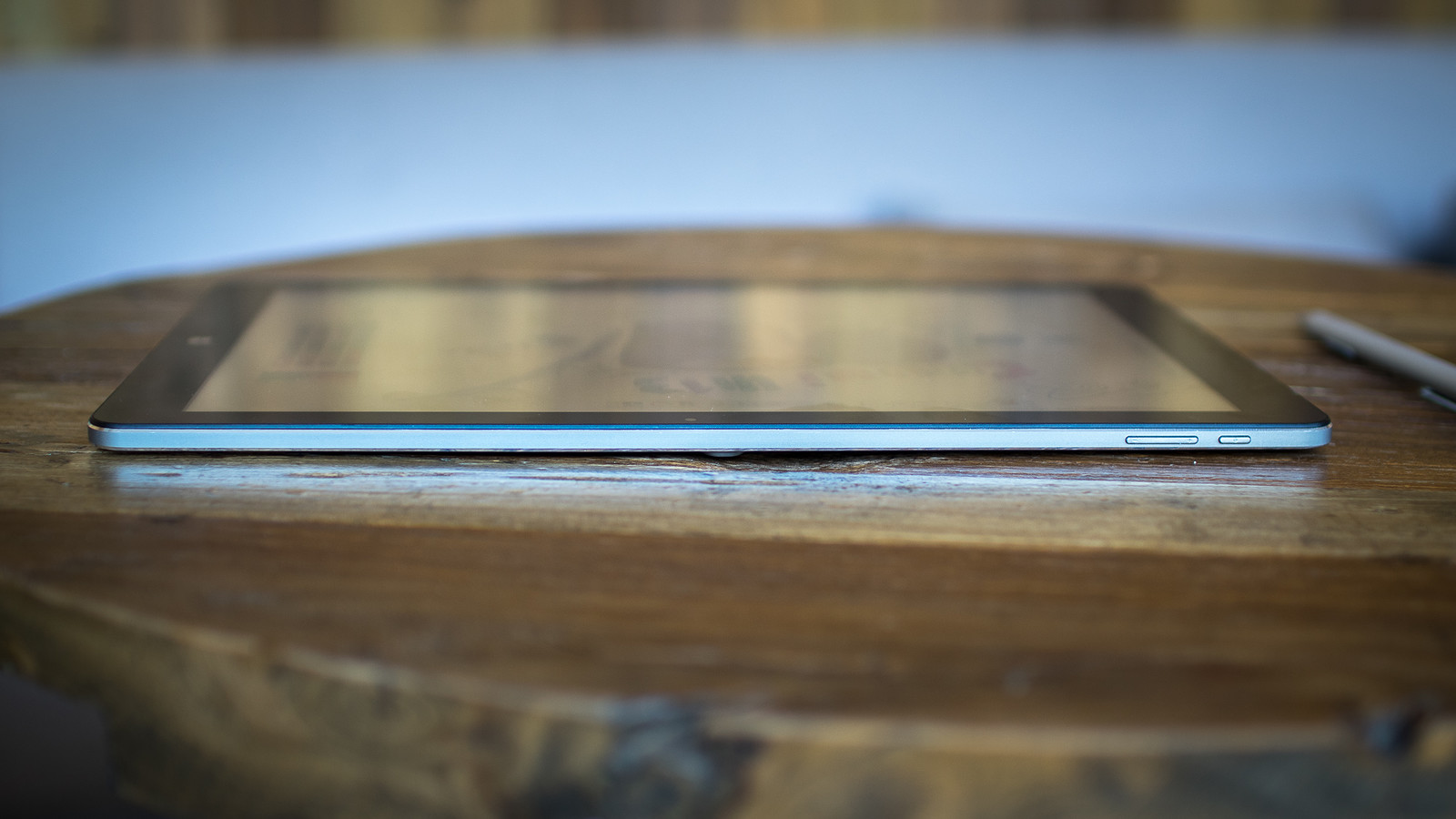
There is nothing on the right side.

And below are the slots for attaching the keyboard and a proprietary connector for connecting to it.
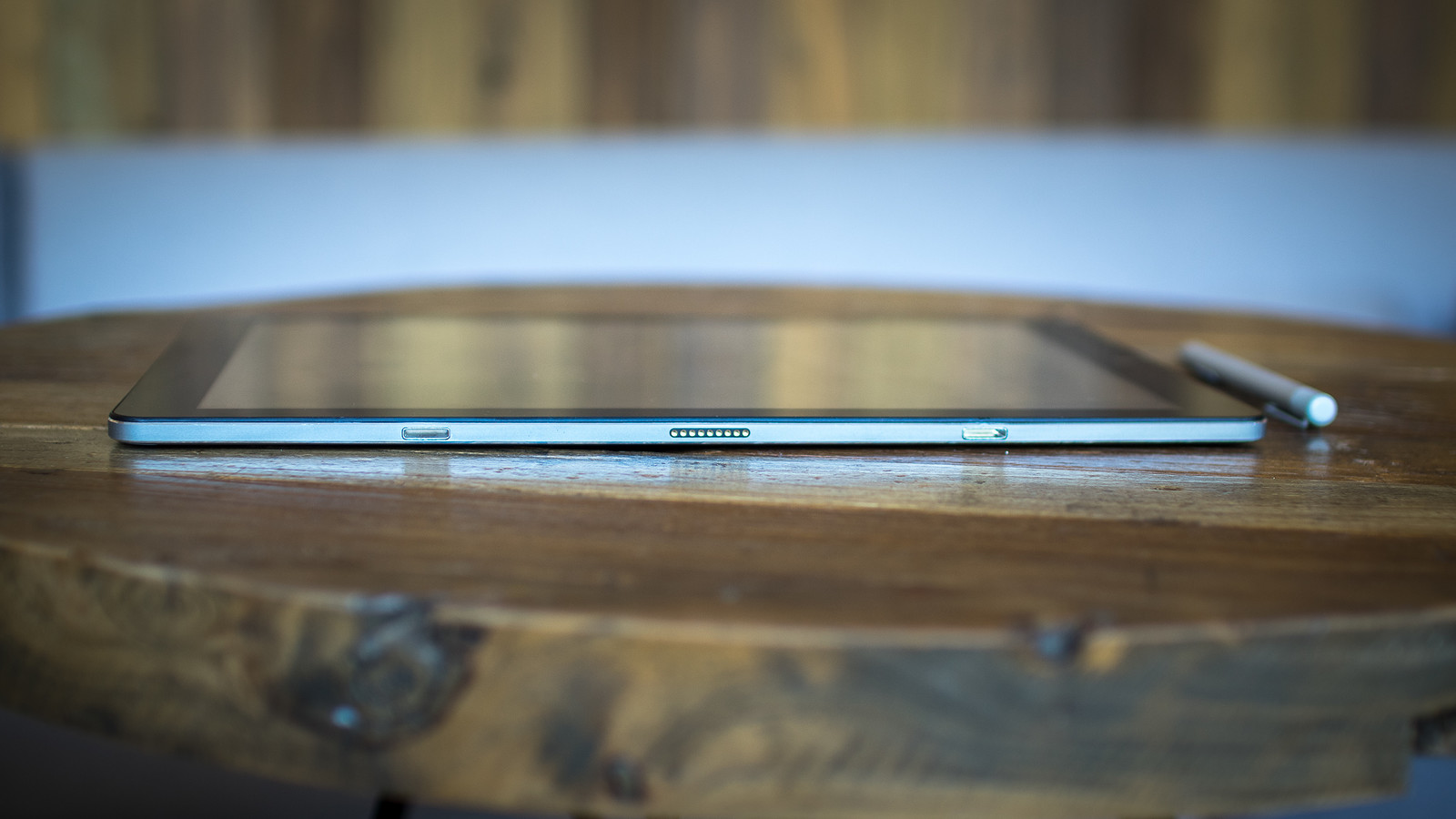
Keyboard
Worth the money. She surprised me pleasantly. There are six rows of keys, the left Ctrl is indeed located on the left (the Fn key to the right). The buttons walk moderately hard, the sensations from the set are very pleasant. Because of the metal case, excellent acoustics are created, so that you can angrily and loudly knock on the keys.

Directly above the Pause Break button are the power and caps lock LEDs. Particularly pleased with the latter, not on every laptop you will meet him.
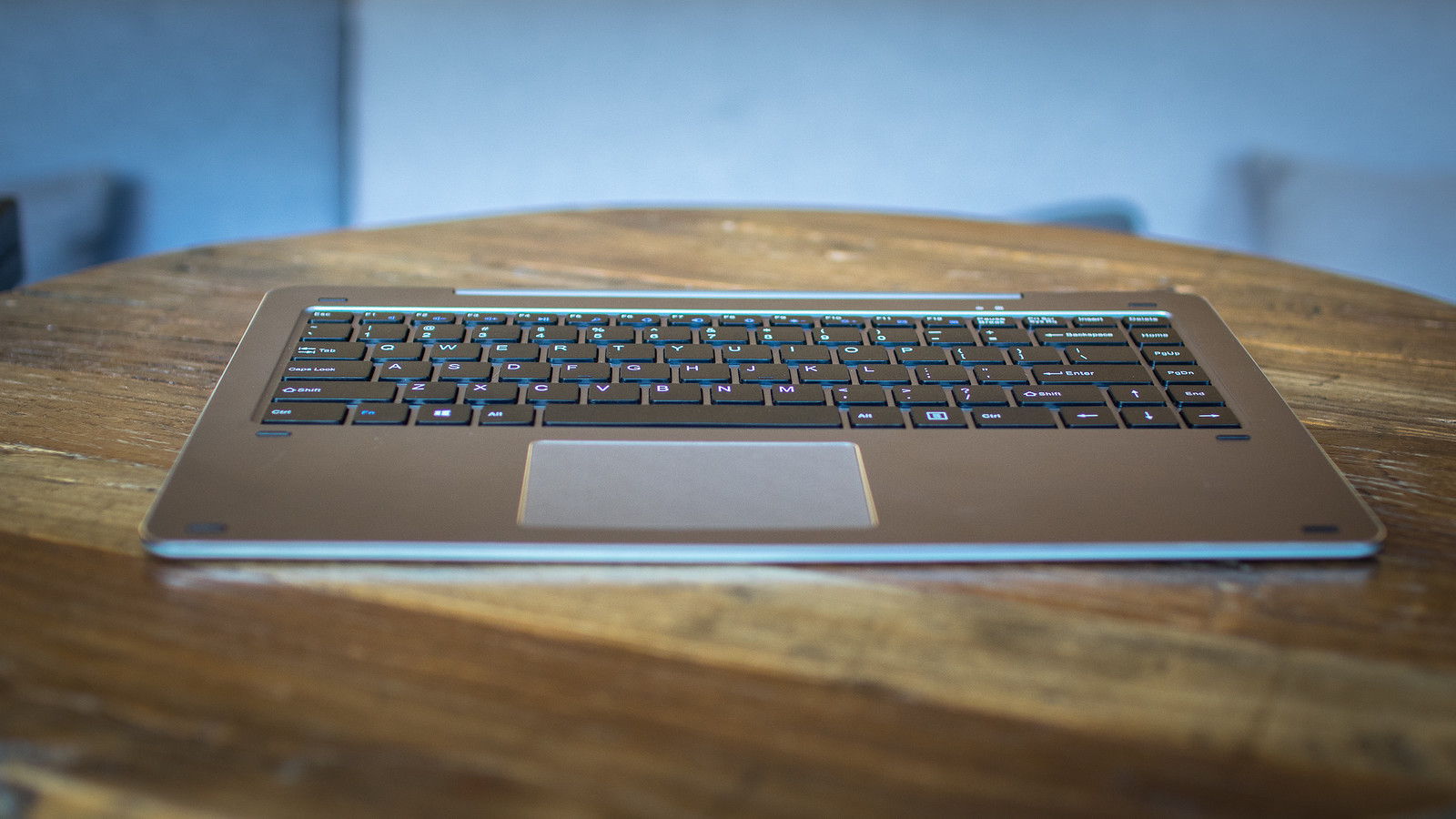
Under the keyboard is a medium-sized touchpad with multitouch support. The click when pressed is loud enough. With this keyboard it is difficult to sit at night in silence, if someone is sleeping next to you.
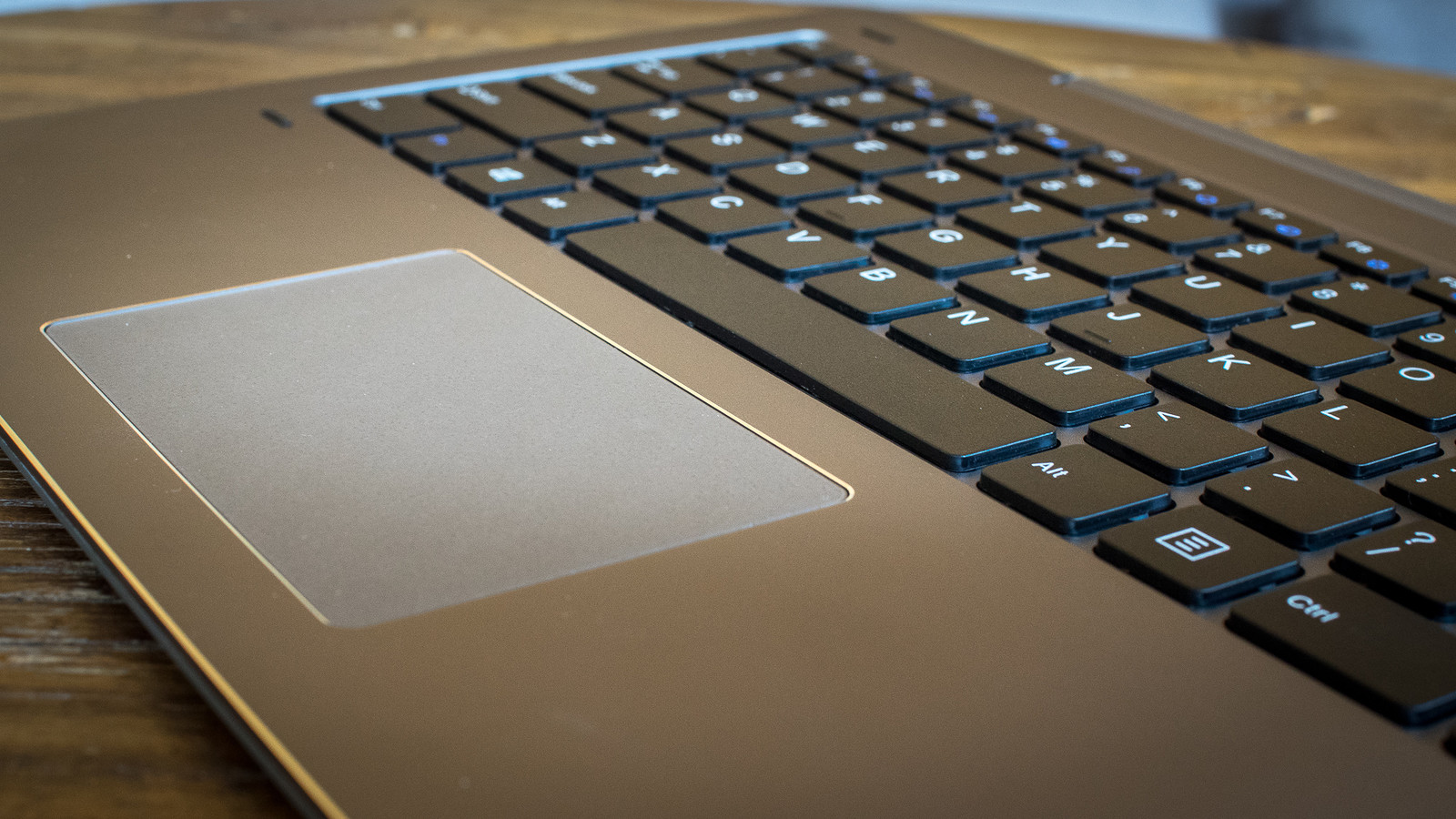
The six black stripes on the edges of the keyboard are rubber inserts to support the screen when you close the lid.
On the side edges of the keyboard is located one USB 3.0.
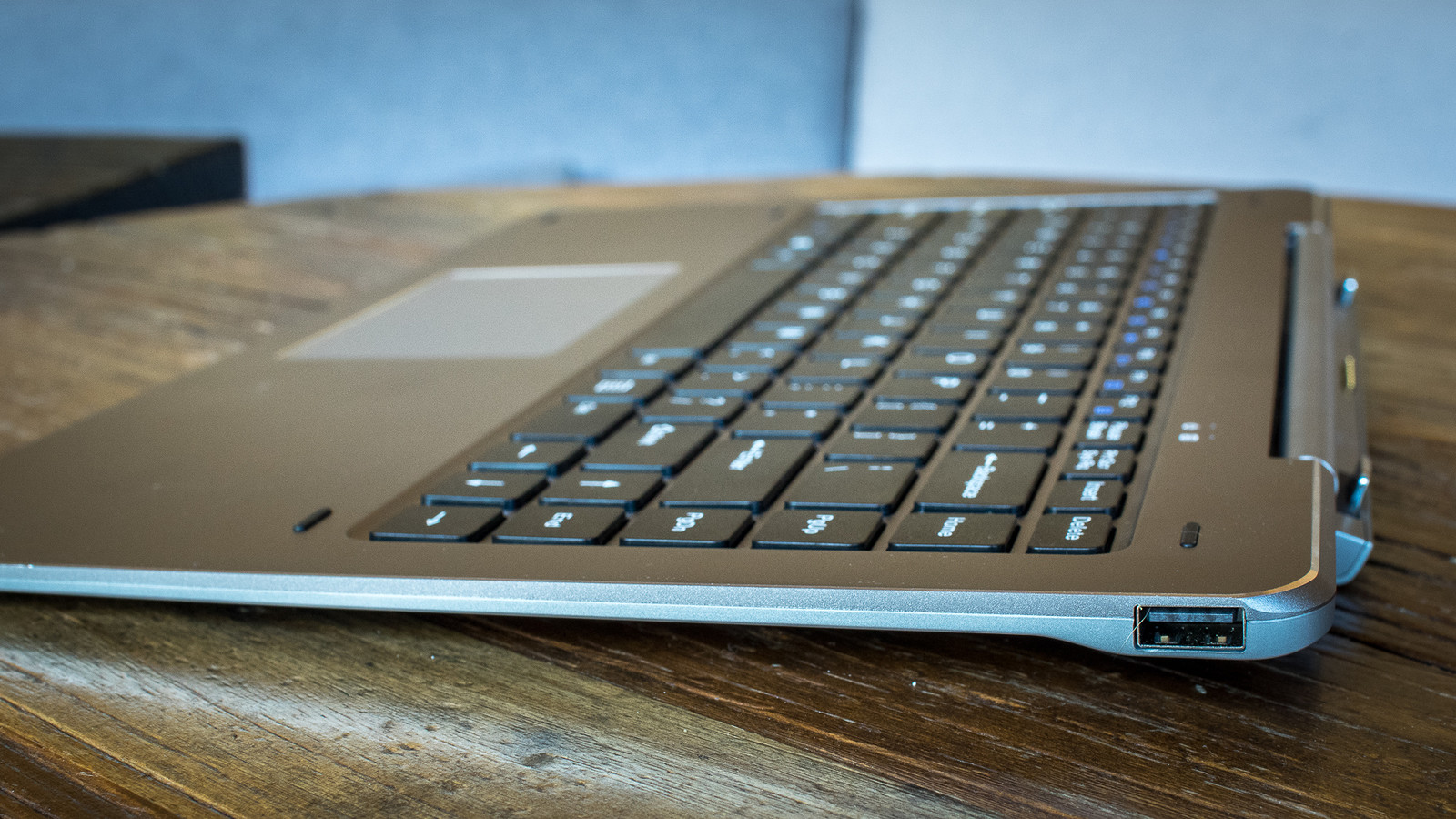
Fastening to the screen is made in the form of two grooves with magnets, as on the Onda Obook10 . Unlike Onda, it is very convenient to use: no effort is needed, the tablet literally jumps into the keyboard and is securely fixed.
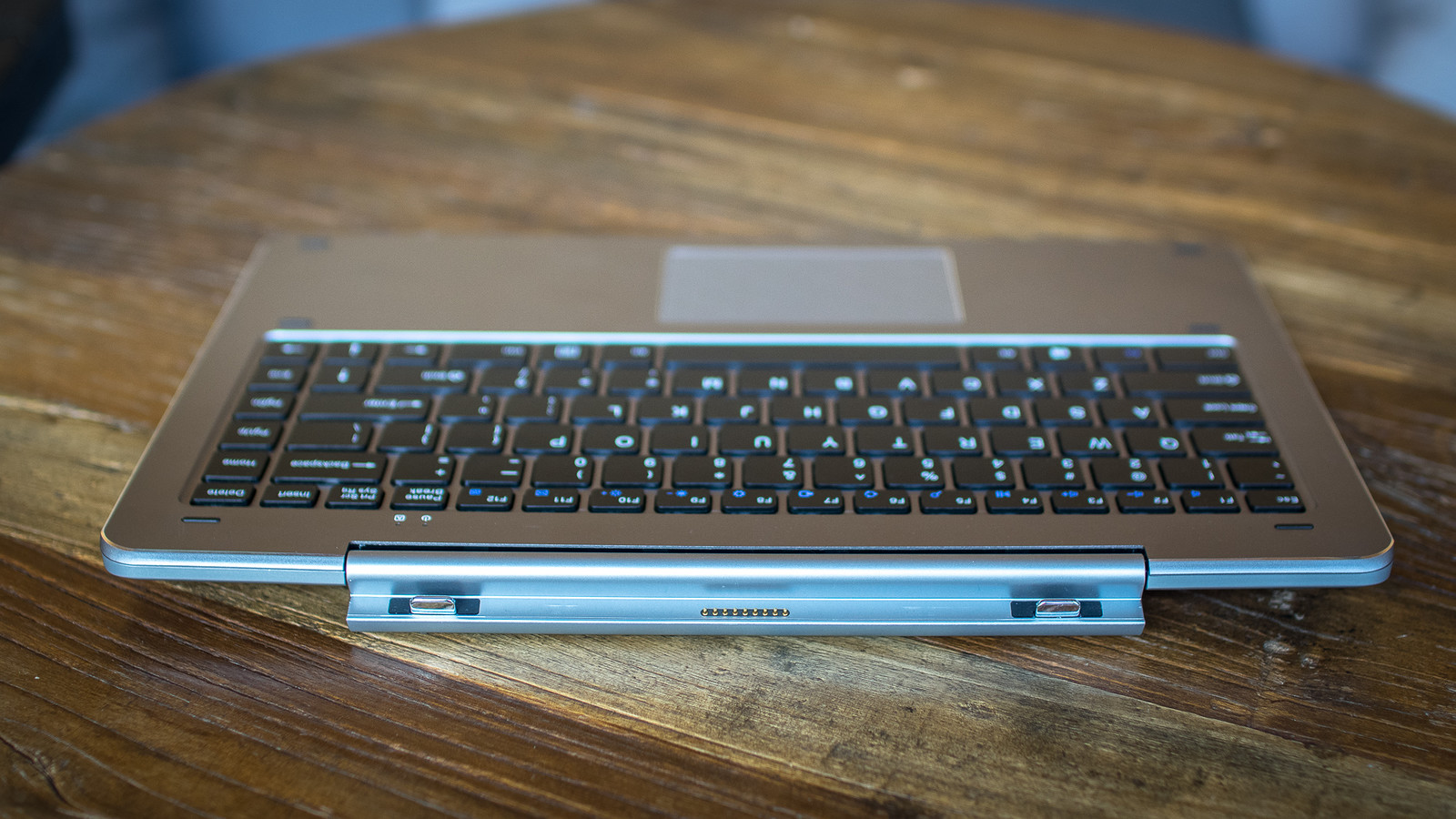
Stylus
The pen is called HiPen H3, it has 1024 levels of depression and a “virtual eraser” on the back.
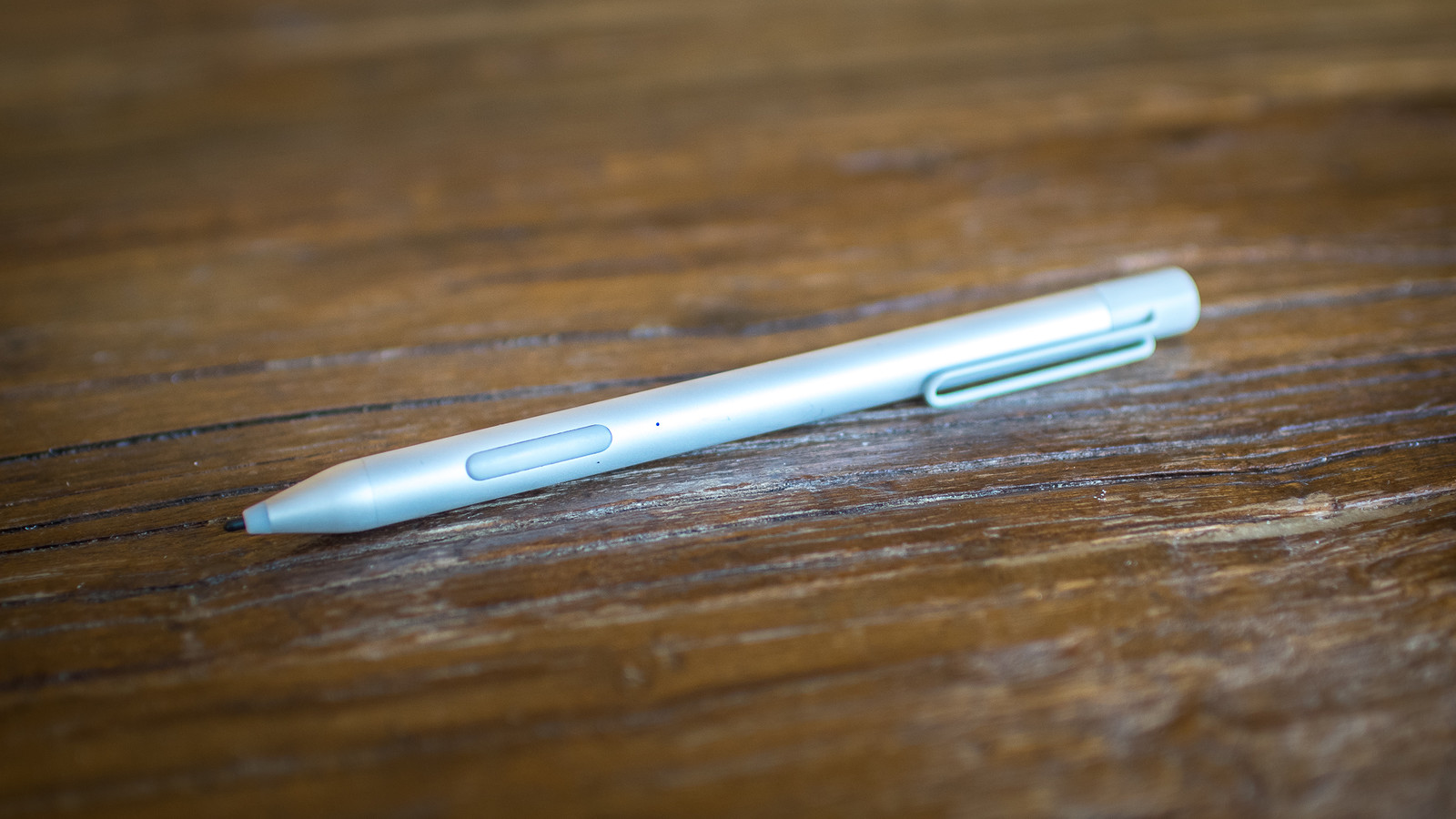
Unfortunately, this is not a Wacom, so it is powered by a miniature rare AAAA battery. It is metallic, but rather light and compact. I will talk about usability below.

Screen
The pearl of the entire device. Chuwi Hi13 is positioned as a competitor to the Microsoft Surface Book , and the screen is generally the same (Panasonic matrix). It covers 100% of the sRGB range, has a brightness of 480 nits, and the aspect ratio is unusual today 3: 2.
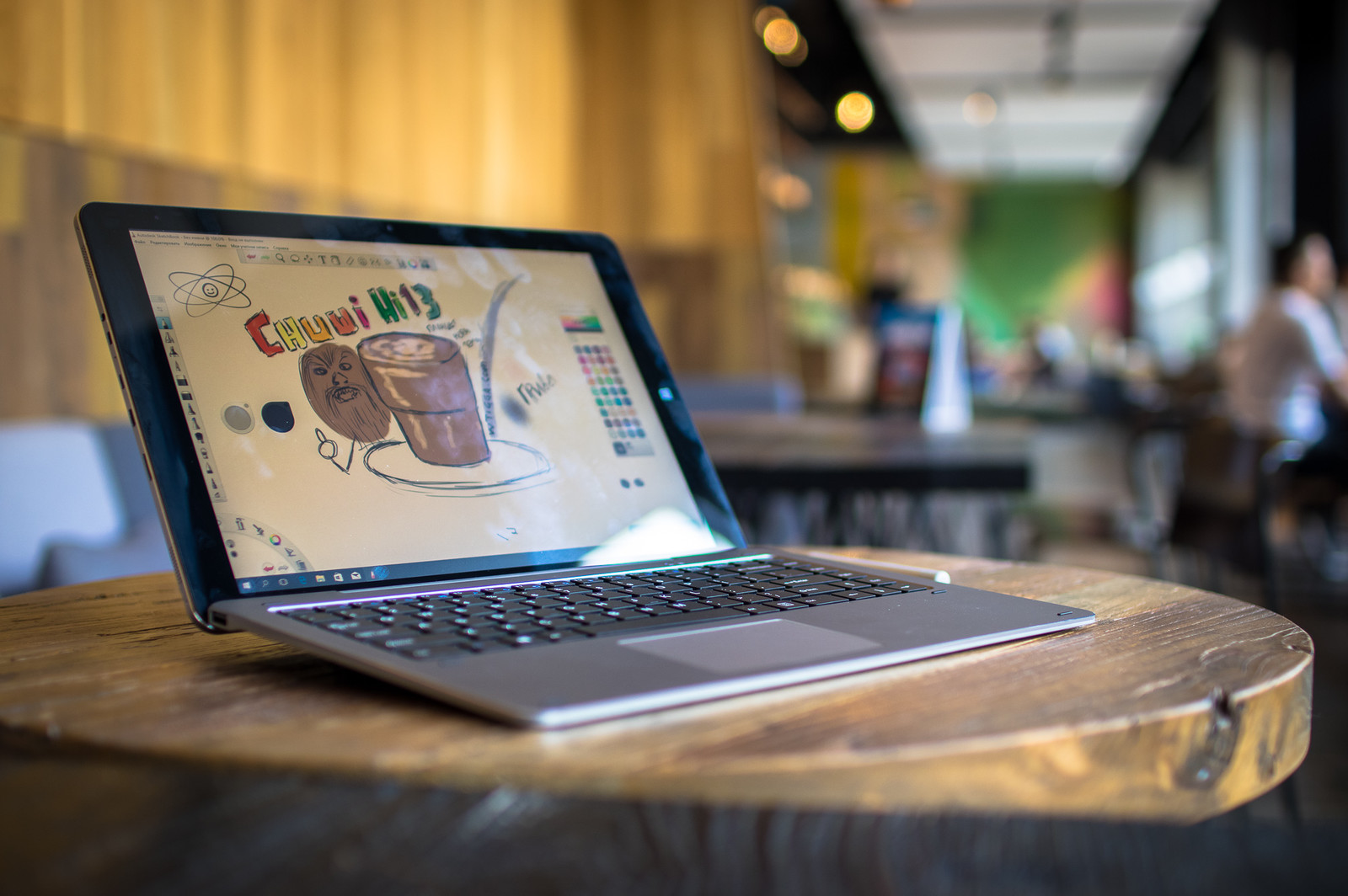
Among the shortcomings: a slightly larger distance between the display matrix and the sensor, as well as simple glass instead of Gorilla Glass. On the functionality and performance, however, it does not affect, and the screen is still better than the vast majority of laptops and tablets in this price range. (by the way, in retail the screen costs $ 350 - more than the entire tablet; the wonders of mass production)
Design
In addition to the obvious “laptop” and “tablet separately”, the device can be rotated, leaving the keyboard fastened, and the screen positioned on top.

You can make a “laptop vice versa”

Performance
This is not a gaming tablet. If you need games harder Counter Strike, look for another device.


Stylus implies a wide creative possibilities. Unfortunately, there are reservations.
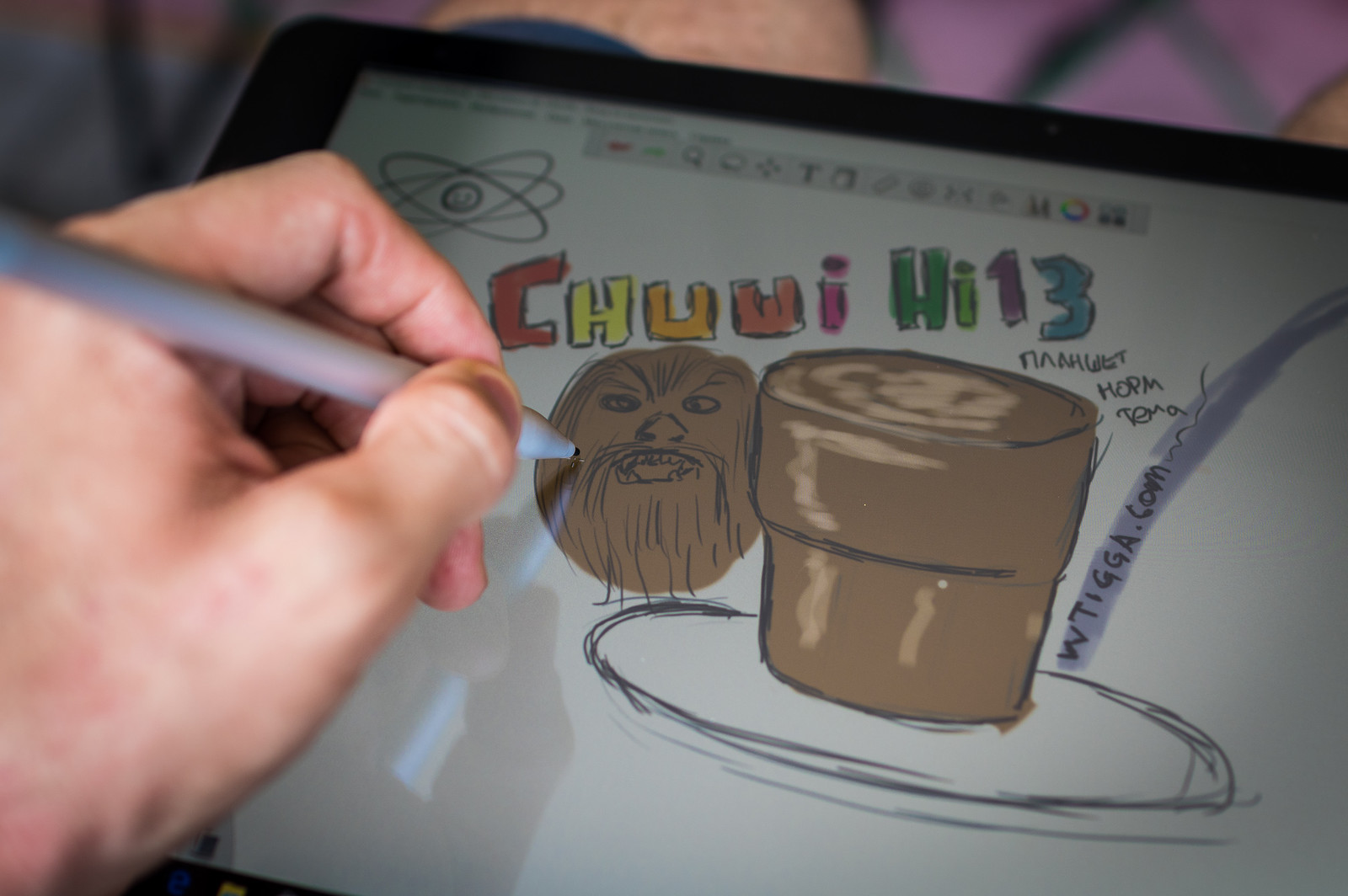
In my favorite Autodesk Sketchbook (PC version, not an application from the Windows Store) you can draw. However, a screen with such a high resolution requires large hardware resources, and when drawing you feel the brush stroke lagging behind the stylus. You can significantly speed up performance by increasing the "scaling" in the properties of the system screen to 175% -200%. Then the lags become acceptable, although they do not reach the iPad Pro (amazingly!).
Here's a video of how a lower resolution brush behaves:
In Adobe Photoshop , the scaling trick could not be repeated, lags are felt. If you want to use the tablet as an artist's tool most of the time, and in Photoshop, you should look at other models, but the price will be much higher.
But this is how the Chuwi Hi13 “business tablet” fits well: office packages fly, a browser, too, no special lags in the system are felt.
Camera
Taking pictures on a 13.5 "tablet will not be a healthy person, but both cameras can handle video calls well. But what is the review without test photos? :-)
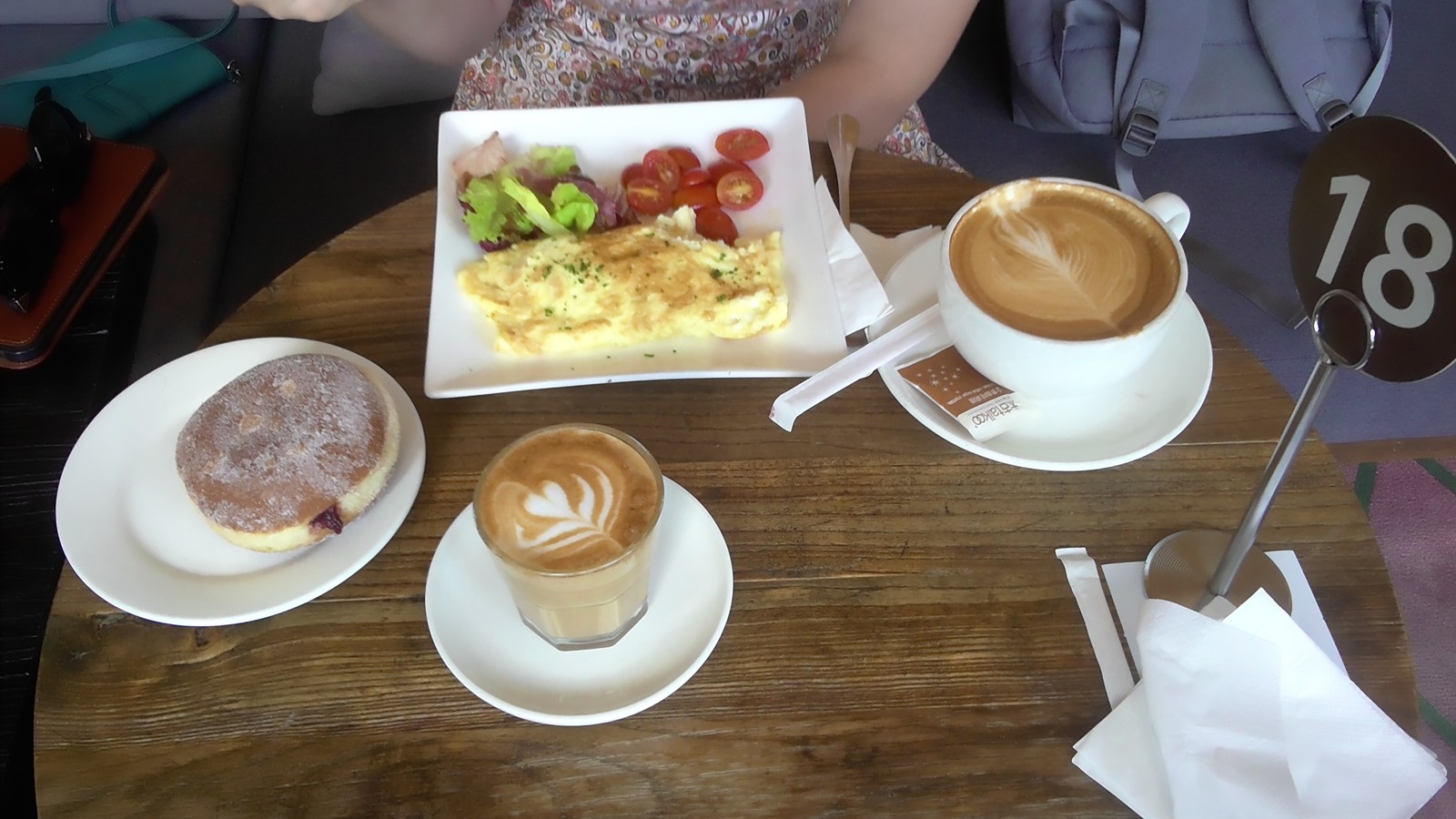
"Main" camera

Front-camera
Power and battery
Charged by USB Type-C charger (12 V, 2A).

In the office-browser mode lasted almost 5 hours.
Personal impressions
pros
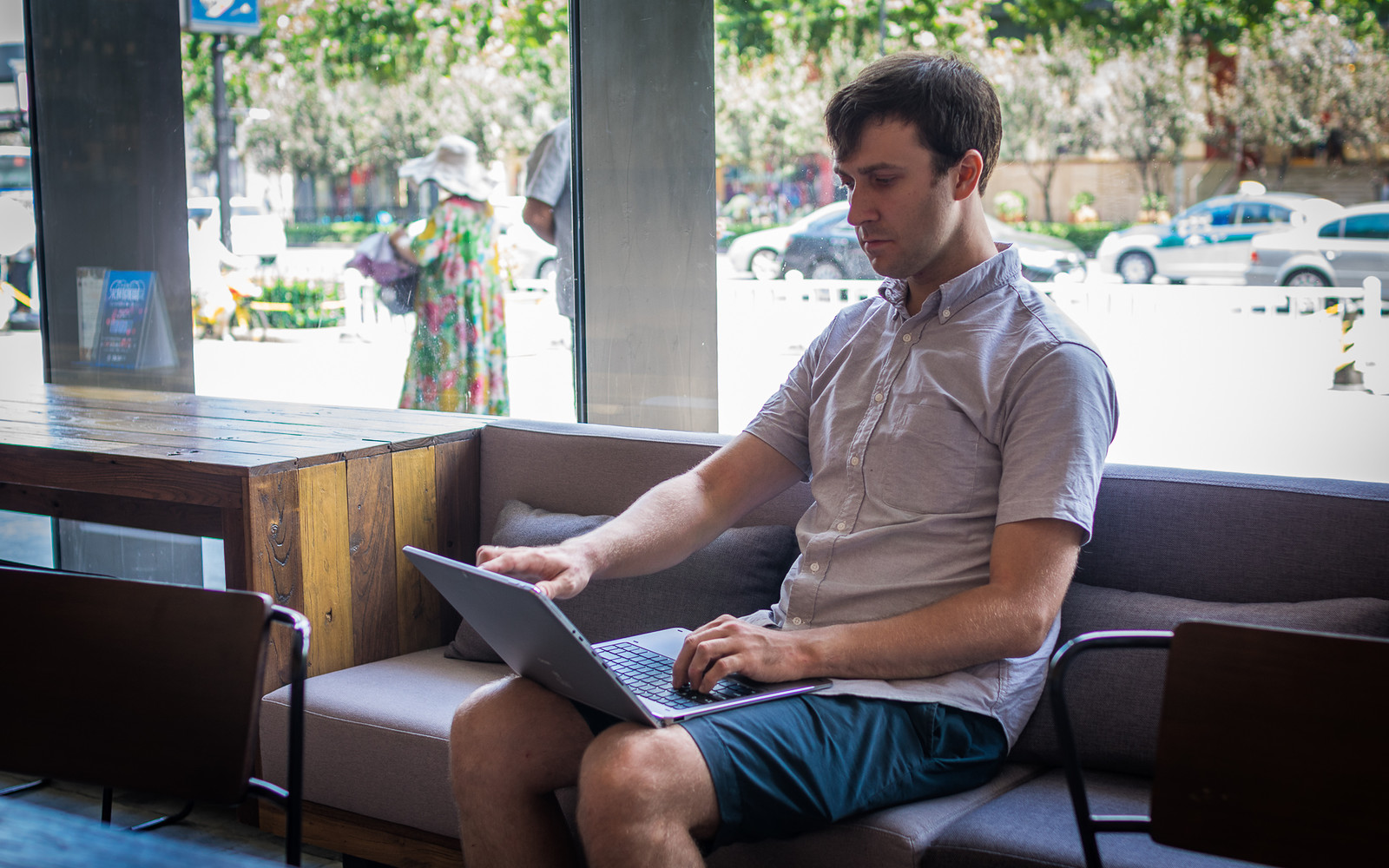
Great laptop tablet. The screen is incomparable: on my home ThinkPad the resolution is 1920x1080 at 15 ", on the working one - the same 1920x1080 at 14". This tablet has a diagonal of just 13.5 ", but the resolution is as much as 3000x2000, PPI 267. That's more than a 15" MacBook Pro (2014) with a Retina display.
The keyboard is just a class: moderately hard keystroke, normal Ctrl layout, no tricky Fn combinations. Also on USB on each side. Fastening to the tablet is convenient, it is easy to get into.
The stylus is a thrill. Not a Chinese plastic craft, but cold aluminum with a perfect fit, and even a virtual eraser.
Minuses

How heavy it is, especially with the keyboard. It should have been expected from a 13.5 "screen. I took my wife, but it seemed like I should have chosen a smaller model.
The stylus has nowhere to go. It is good that there is a clothespin, like ball pens, but the groove in the keyboard would not hurt. It is interesting that the stylus is magnetised at the edges of the tablet (apparently, to the speakers) and to the keyboard stand (where the magnets are holding the tablet).
On the knees, you need to learn how to type, the screen goes shaking: the tablet format implies working on the table. The same happens when you press your finger on the screen (and even in the desktop position).
There is more than enough productivity for everyday office-tablet tasks, but bad luck came out with the stylus: for its smooth operation, especially at high screen resolutions, the processor is clearly lacking, and the lag is felt when drawing. The response speed can be increased by increasing the scale in the settings of the screen to 175-200%, then the standard PC programs work with a lower resolution, and the work goes smoothly. However, then the pixels become quite noticeable.
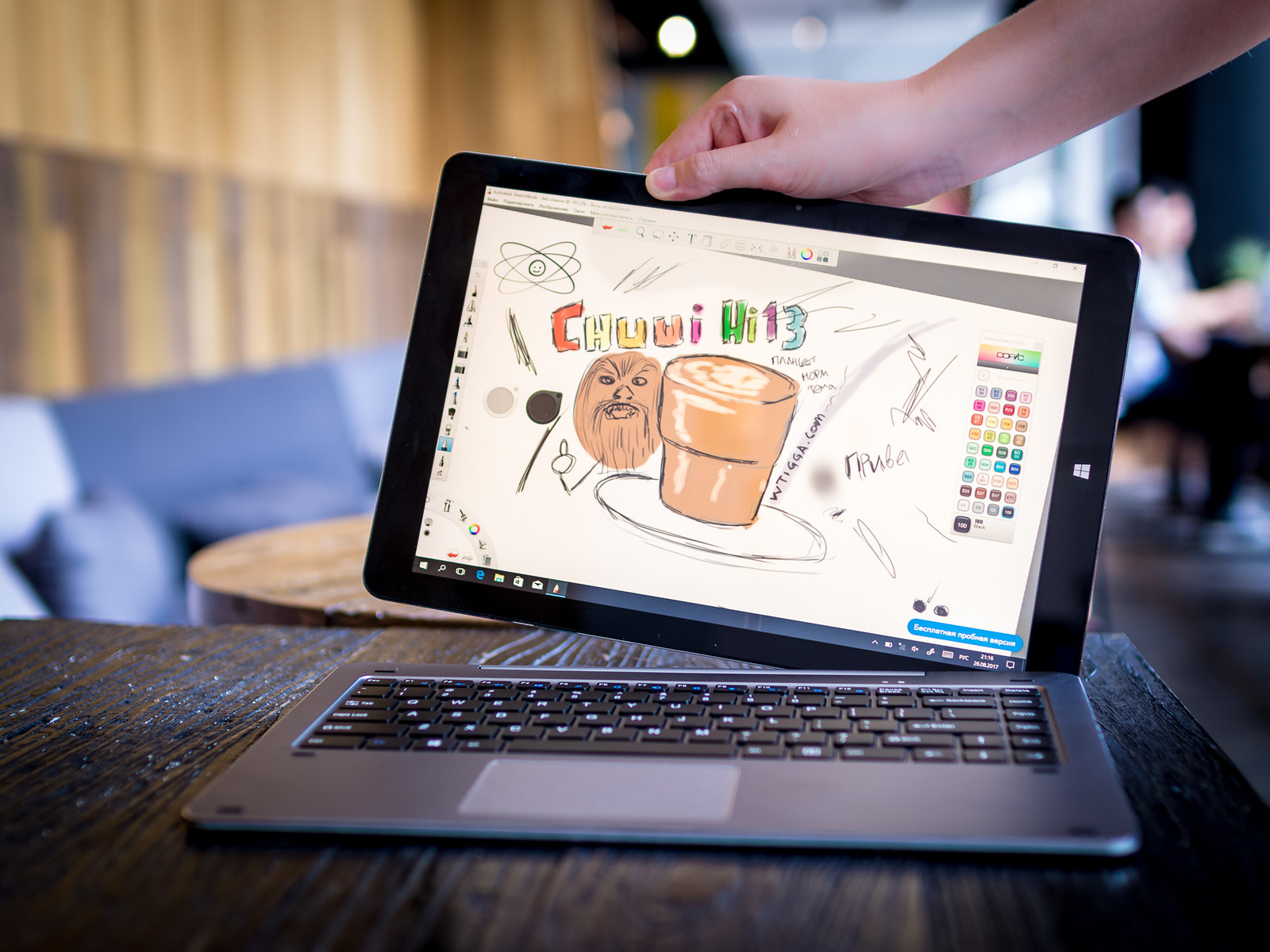
Conclusion
A great device, if you take into account some little things. If you absolutely do not want to spend three times more on the Microsoft Surface Book , then it has no analogues at all.
+ Strong case
+ Matchless display
+ Delightful keyboard
+ Licensed Windows 10
+ Stylus
- Heavy
- To unlock the potential of the stylus need a processor more powerful

All Articles